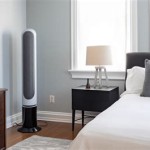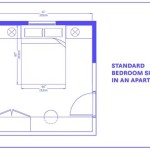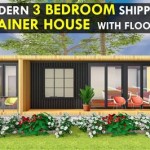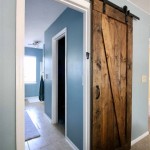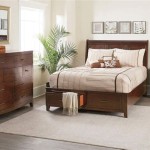Affordable 4 Bedroom Prefab Homes: A Comprehensive Overview
Prefabricated homes, often referred to as prefab homes, have progressively gained traction as a viable and increasingly desirable alternative to traditional site-built housing. The appeal stems from a multitude of factors, including potentially lower costs, faster construction timelines, and increasingly sophisticated design options. Within the prefab market, the 4-bedroom model is a particularly sought-after configuration, catering to the needs of growing families and those requiring extra space for home offices, guest rooms, or hobbies. Understanding the nuances of affordable 4-bedroom prefab homes requires a careful examination of various aspects, including construction methods, cost considerations, customization possibilities, and the overall advantages and disadvantages compared to conventional construction.
This article provides a comprehensive overview of affordable 4-bedroom prefab homes, exploring the factors that contribute to their affordability, the construction processes involved, the design and customization options available, and the potential benefits and limitations associated with this housing solution. Understanding these elements is crucial for prospective homeowners considering a prefab 4-bedroom home as their primary residence or investment property.
Understanding the Affordability of Prefab Homes
The affordability of prefab homes is often a primary driver for prospective buyers. Several key factors contribute to the potential cost savings associated with prefab construction. One significant factor is the efficiency of the manufacturing process. Prefab homes are constructed in controlled factory environments, minimizing weather-related delays, material waste, and labor costs. This streamlined production process allows manufacturers to leverage economies of scale, purchasing materials in bulk and optimizing the use of labor, ultimately reducing the overall cost per square foot.
Another factor contributing to affordability is the reduced construction timeline. Traditional site-built homes can take months, or even years, to complete, incurring significant labor costs and potential cost overruns due to weather delays or unforeseen site conditions. Prefab homes, on the other hand, can be constructed in a matter of weeks or months, significantly reducing labor costs and accelerating the move-in date. This faster timeline also minimizes the need for interim housing costs, such as rent or mortgage payments on a previous residence.
Furthermore, the inherent design efficiencies in standardized prefab models can contribute to cost savings. While customization options are available (discussed later), selecting a pre-designed floor plan avoids the often-substantial costs associated with custom architectural designs and engineering fees. These pre-designed plans have already been optimized for material efficiency and structural integrity, allowing for cost-effective construction.
It is important to note that while prefab homes can offer significant cost savings, the overall affordability is dependent on several factors, including the level of customization, the chosen finishes and fixtures, the transportation costs to the building site, and the costs associated with site preparation and foundation work. A thorough cost analysis, comparing different prefab manufacturers and considering all associated expenses, is essential for determining the true affordability of a 4-bedroom prefab home.
Exploring Construction Methods and Materials
Prefab homes are constructed using a variety of methods, each with its own advantages and disadvantages. The most common methods include modular construction, panelized construction, and manufactured homes. Modular construction involves building the home in individual modules or sections within a factory setting. These modules are then transported to the building site and assembled on a prepared foundation. Modular homes often offer the greatest flexibility in design and can be indistinguishable from site-built homes.
Panelized construction involves manufacturing individual wall panels, roof trusses, and floor systems in a factory. These panels are then transported to the building site and assembled on a prepared foundation, forming the structural shell of the home. Panelized construction allows for quicker assembly compared to traditional stick-built construction, while still offering a degree of design flexibility.
Manufactured homes, often referred to as mobile homes, are constructed entirely in a factory and transported to the building site on a permanent chassis. While manufactured homes can be a more affordable option, they often have limitations in terms of design and customization, and may be subject to different building codes and financing options compared to modular or panelized homes. It is crucial to distinguish between manufactured homes and other types of prefab homes, as they differ significantly in construction quality, design options, and overall value appreciation.
The materials used in prefab construction are generally the same as those used in traditional site-built homes, including wood framing, steel framing, concrete foundations, and a variety of exterior cladding options such as siding, brick, and stucco. The quality of materials used in prefab construction can vary depending on the manufacturer and the price point of the home. Reputable prefab manufacturers prioritize using high-quality materials that meet or exceed local building codes and ensure the long-term durability and energy efficiency of the home.
Consumers should carefully research the construction methods and materials used by different prefab manufacturers to ensure that they are selecting a home that meets their needs and expectations in terms of quality, durability, and energy efficiency. Independent third-party inspections can also provide valuable assurance regarding the quality of construction and adherence to building codes.
Design and Customization Options for 4-Bedroom Prefab Homes
One of the common misconceptions about prefab homes is that they are limited in terms of design and customization options. While some basic prefab models may offer limited choices, many manufacturers offer a wide range of design options to suit different tastes and preferences. These options can include different floor plans, exterior elevations, interior finishes, and appliance packages.
For 4-bedroom prefab homes, popular design considerations include the layout of the bedrooms and bathrooms, the size and configuration of the kitchen and living areas, and the inclusion of features such as a master suite, a home office, or a dedicated laundry room. Many manufacturers offer customizable floor plans that allow buyers to modify the layout of the home to meet their specific needs.
Exterior design options can include different siding materials, roofing styles, window and door packages, and landscaping options. Some manufacturers also offer the option to add porches, decks, or garages to the prefab home.
Interior finish options can include different flooring materials, cabinet styles, countertop materials, and paint colors. Buyers can also choose from a range of appliance packages to suit their budget and preferences. Some manufacturers offer the option to upgrade to premium finishes and appliances.
While the level of customization available may vary depending on the manufacturer and the price point of the home, it is generally possible to create a 4-bedroom prefab home that reflects your personal style and meets your specific needs. It is important to work closely with the manufacturer to discuss your design preferences and to understand the available customization options. Visiting model homes or viewing virtual tours can also provide valuable inspiration and help you visualize the finished product.
Beyond aesthetic customizations, structural modifications are sometimes possible, albeit at a higher cost. These might include adding windows, expanding rooms, or altering the roofline. However, it is important to note that significant structural changes can impact the cost-effectiveness of prefab construction, as they may require custom engineering and manufacturing processes. Therefore, it is advisable to carefully consider the cost-benefit ratio of any structural modifications.
In summary, while achieving a completely bespoke design may not always be the most affordable route with prefab homes, the range of available design and customization options is continually expanding, allowing buyers to create a 4-bedroom prefab home that is both functional and aesthetically pleasing. Thorough research and clear communication with the manufacturer are key to achieving the desired outcome.
Financing options for prefab homes are becoming increasingly similar to those for traditional site-built homes. Mortgages, construction loans, and government-backed loans like FHA and VA loans are often available, depending on the type of prefab home and the borrower's qualifications. However, it is crucial to engage with lenders who are familiar with prefab construction, as some lenders may have specific requirements or limitations related to prefab financing. Obtaining pre-approval for a mortgage before embarking on the prefab home buying process is highly recommended.

Prefab House Plans Nelson Homes Usa

4 Bedroom Manufactured Homes Me

2025 Modular Home Prices Cost To Build Prefab House

Custom Prefab Homes Nelson Usa

4 Bedroom Mobile Homes Spacious And Affordable The Mhvillager

Modular Home Floorplans Layouts Next

Affordable 4 Bedroom Manufactured Homes Clayton Studio

4 Bedroom Manufactured Homes Me

Affordable Stylish The Marvel 4 By Tru Homes Bed 2 Bath Tour

4 Bedroom Fleetwood Affordable New Floor Plan

